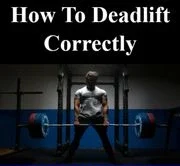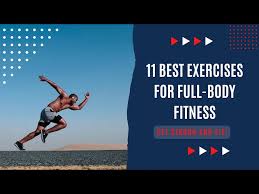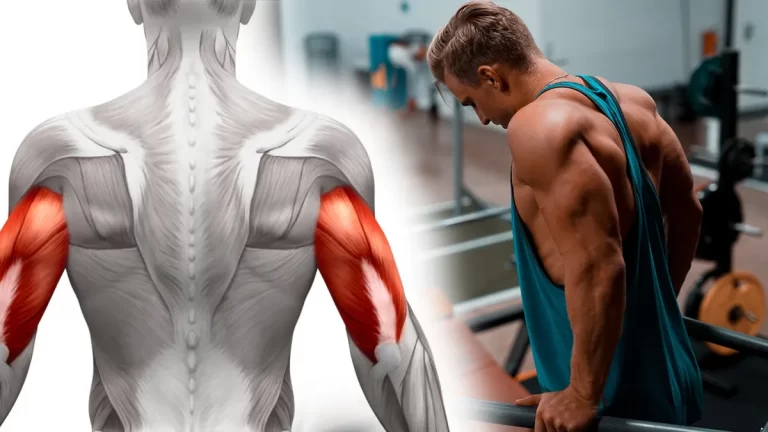11 Best Exercises for Cervicogenic Headache
Table of Contents
Introduction
A Cervicogenic headache is described as the development of pain in the neck area and is felt in the head. It is the type of normal headache that results from another condition, such as a neck trauma or infection. People may not properly understand the differences between Cervicogenic headaches with migraine and tension headaches, both of which can reason of neck pain.
Cervicogenic headache (CGH) is a chronic headache that originates from the atlanto-occipital and upper cervical joints and is perceived in one or more regions of the head and/or face.
A cervicogenic headache is a cause of a chronic headache that is often misdiagnosed. The clinical features can be complex and similar to many primary headache syndromes that are encountered daily. The one important symptom of a Cervicogenic headache is a combination of unilateral headache (neck pain), and ipsilateral shoulder and hand pain. decrease the range of motion of the neck joint, and pain is relieved with anesthetic blockades.
Cervicogenic headaches are secondary headaches. Secondary headaches are caused by an underlying condition, for example, neck injuries, infections, or severe high blood pressure. in the primary headaches included the migraine and the cluster headache.
In this article, we discuss the all details related to this condition, its causes, symptoms, and treatments for Cervicogenic headaches. this article is mostly about the exercises of the Cervicogenic headache condition.
Clinical Relevant Anatomy
- The cervical spine consists of 7 vertebrae, C1-C7, cervical nerves C1-C8, muscles, and ligaments. the first and second vertebrae have unique structures and functions. They form the upper cervical spine.
- The upper vertebrae support the skull (atlas/C1) and articulate better with the back of the head (atlas-occiput).
- This joint is responsible for 33% of flexion and extension.
- The design of the Atlas allows the head to move back and forth. Below the atlas is an axis (C2) that allows rotation.
- The atlantoaxial joint is responsible for 60% of the total cervical rotation.
- The 5 cervical vertebrae that make up the lower cervical spine, C3-C7, are similar to each other but differ significantly from C1 and C2.
Causes of the Cervicogenic Headache
At the top of the cervical spine, the trigeminocervical nucleus is the area of concentration of the sensory fibers of both the trigeminal nerve and the upper spinal nerves. The trigeminal nerve is responsible for pain in the face, including the top of the head, forehead, eyes, and sutures. When the pain sensation caused by CGH is detected by the upper spinal nerves, it is transmitted to the trigeminal nerve fibers in the trigemiocervical nucleus. This leads to pain that is felt in different areas of the head.
- A number of factors can transfer pain from the neck to the head, such as:
- Lesions of the atlantooccipital joint (the connection between the base of the skull and the first cervical vertebra).
- Damage to a part of the cervical spine, such as a vertebra, facet joint, or disc
- Cervical radiculopathy caused by a pinched nerve in the upper spine
- Neck muscle damage
- Tumors in the cervical region
- whiplash injury that causes pain soon after the injury
Symptoms of the Cervicogenic headache
- Unilateral or dominant headache (Excluding those with bilateral headache or symptoms that typify migraine headaches).
- Exacerbated by neck movement or posture
- Tenderness of the upper three cervical spine joints
- Association with neck pain or dysfunction
- Weakness in the deep neck flexors
- Increased activity in the superficial flexors
- Atrophy in the suboccipital extensors muscles and so the deep muscle sleeve which is
- Upper trapezius, sternocleidomastoid, scalenes, levator scapulae, pectoralis major and minor, and short sub-occipital extensors have been involved.
- Compared to migraine headache and, cervicogenic headache group patients complaining of
- increased tightness and trigger points in the upper trapezius, levator scapulae, scalenes, and suboccipital extensors
- Blurry vision
Diagnosis
Because there are many different types of headaches, it can be difficult to make sure you have cervicogenic headaches. The doctor will examine you and ask you about your health. They want to know what you do when it hurts and where it hurts.
Be sure to tell them if:
- The headache gets worse with time.
- You also have a fever or rash.
- You hit your head or you hurt.
These could be signs of another health problem that needs attention. Seek emergency care if the headache comes on suddenly and is very painful, your neck is stiff or you feel dizzy. To learn more about a headache, your doctor will likely want to look at one or more of the following:
- X-rays: Low doses of radiation are used to make images of the bones of the neck and spine.
- Computed Tomography (CT): Multiple X-rays are taken from different angles and stitched together to show more information than a single x-ray.
- Magnetic Resonance Imaging (MRI): Uses powerful magnets and radio waves to take detailed pictures of the head, neck, and spine. They may also recommend a “nerve block.”
This is a shot given by a specialist that puts a numbing medicine on certain nerves in the back of your head. If the pain goes away with the nerve block, it means that the headache is probably caused by a nerve problem in the neck. The nervous system is also one way to treat CH.
Your doctor may also ask you to move your head and neck in certain ways to see what is causing you pain. They may press on certain areas of the neck to see if it is causing a headache. You may also have a blood test to make sure the problem is not an illness causing the pain.
Exercise for Cervicogenic headache
Head Circles
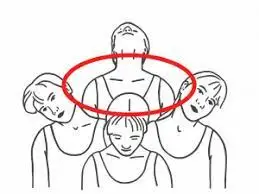
If possible, do neck rotations in a standing position. Although you can fill them sitting down position, you get the best range of motion when your head can move without touching your back from the chair.
Start with a straight head and look ahead. Take a few breaths to relax and try to soften the tension in the neck and trapezius muscles located on top of the shoulders. Establish feet hip-width apart and arms relaxed at the sides. Coloring rings can relieve tension and are a great way to warm up your neck beforehand training They are especially useful when you move your neck or squeeze your chin a lot, like in boxing or martial arts.
- Tighten your core and pull your shoulders down and back.
- Keep your back neutral (do not lie down back). Gently tilt your head to the right, dropping your ear to your right shoulder.
- Stop once you feel stressed. Do not miss this point. Hold this position – shoulders down and back and core supported – 1- 2 seconds. Gently turn your head forward, lowering your chin to your chest.
- Tuck your chin into your neck as if you were doing a double chin.
- Hold for 1-2 seconds. Turn your head to your left shoulder, pausing to hold for 1-2 seconds. Tilt your head back, and tilt your chin to the ceiling. Keep your shoulders down and back everywhere.
Other Variations of Neck Circles
Partial Neck Circles
Neck Circles with Pressure
Lateral Neck Flexion
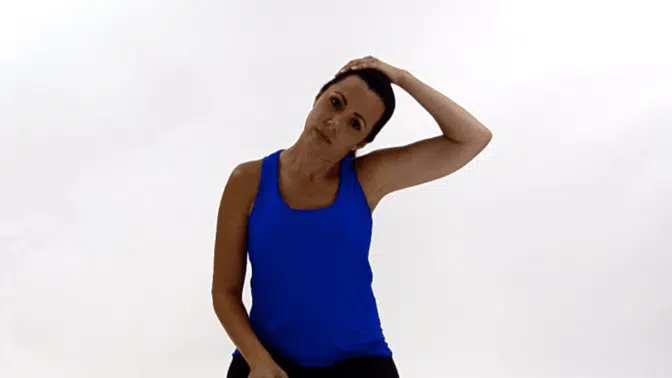
- Starting position: stand with your feet hip-width apart, toes forward or slightly turned out, arms at sides. Tighten your abs (“squeeze”) to stabilize your back, then squeeze the shoulders and draw them in (pull the shoulders down and back) without arching your lower back.
- Slowly pull your right ear toward your right shoulder, stopping when you feel a stretch. to be
- Make sure you keep your body in line by keeping your shoulders down and back. Hold the stretch for 5 -10 seconds. Slowly return to the starting position. Repeat on the left side. Do a total of 2-4 repetitions.
Do the exercise gradually and follow the proper procedure of the exercise. Be careful not to force it when using its arm to increase stretch. give mild pressure while the exercise.
Exercise Variation:
Increase the stretch place your hands above your head and apply a light beam press with your fingertips.
To stretch the sternocleidomastoid, slowly lift the chin up after bending the neck laterally.
Chin Tuck
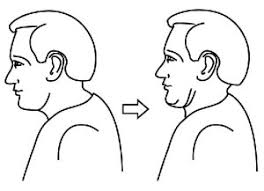
A chin tuck involves moving the head slightly and bringing the chin towards the chest you nod slowly. This movement can improve neck movement and strength after the exercise. it is easier to rest and move without pain. Chin surgery activates and strengthens the muscles in the front of the neck, which can help with stabilization.
- your head In the process, the back of the head is also tightened removing the chin. These moves can help reduce neck pain and also prevent headaches because they improve flexibility and mobility Chin tucking.
- Stand in a comfortable position.
- Nod your head slightly to bring your chin to your chest.
- Slide or pull your chin back, focusing on relaxing your jaw muscles as you hold it. then Relax your neck muscles to return to the original movement.
Doorway Pectoralis strech
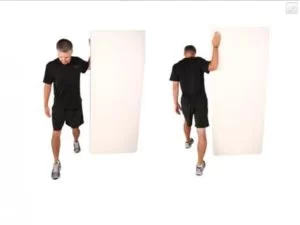
The doorway pectoralis stretch opens up the pectoral muscles by stretching them. This stretch can help reduce forward, rounded shoulders and a hunched back that can develop over time. Lengthening the hamstrings improves shoulder and neck mobility.
- Stand in the open door. Raise both arms out to the side, bent at a 90-degree angle, palms facing forward. Rest your palms on the door frame. If it hurts too much, try moving your elbows down a little.
- Step forward slowly with one foot. experience the stretch in your pectoralis muscle. Stand tall and don’t lean forward.
- Hold for 15 seconds or as directed. Step back and relax. Repeat 3 times or as directed.
This stretch should feel deep and gentle, but not painful. this stretch provides flexibility to the neck muscle and reduces the tension of neck muscles.
The Dart

The dart exercise uses the back latissimus dorsi and trapezius extensors to tighten and relax the back of the muscles. You are also connected to the gluteal muscles. Both help to elongate the spine and stabilize the body. the dart exercise will improve the good posture. A physical therapist may recommend this for certain types of back pain. This exercise should be done on a firm, padded surface.
- Lie on your stomach with your feet together. Keep Hands at sides.
- Lift your abs off the mat. Breathe in. Breathe Keep your abs pulled in.
- Guide the energy through your spine and out of the top of your head to lift your upper body slightly off the mat.
- Attach a mat to the pubic bone to protect the lower back. Your legs and glutes are involved in providing lower body stability, but don’t put too much pressure on them.
- Your head is an extension of your spine. The look is down. Your shoulders slide down your back as your arms reach behind you as if they were blown back.
- Hold your breath. Exhale to lengthen and lower your body to the floor. Repeat this exercise three times.
Modifications
When you feel stable and not painful, open your chest and look a little more for admiration and flight. Just make sure your neck is long and soft.
If darts feel good, move on to Pilates swimming. It is a dry swimming exercise that stretches the back, which is also done lying on the stomach on the exercise mat.
Shoulder rolls
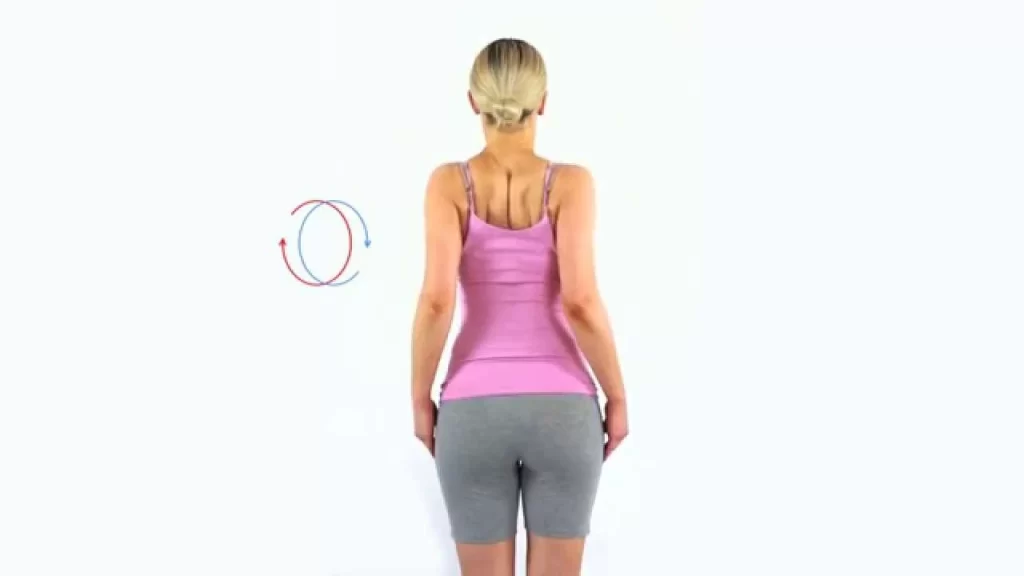
Depending on the range of motion, flexibility, and other factors such as injuries, there are several ways to perform shoulder rolls. These step-by-step instructions describe a shoulder roll for people with a full shoulder and neck range of motion.
- Start by standing or sitting tall, with a proud chest, a neutral back, and an engaged core. Pull your shoulders back and down.
- Keep your eyes open. Begin the shoulder roll by raising your shoulders to your ears as high as possible.
- Do this without arching your back, twisting your neck, or dropping your shoulders forward. raise your shoulder as much as you can and then pull your shoulder back.
You can use your central back area for the shoulder-down movement. - When you reach the neutral starting position, arch your upper back slightly to push your shoulders forward while maintaining a strong core. Ree shrugs to start another shoulder roll.
- Do 10-15 shoulder rolls, resting for 30 seconds, before starting the second set. Try three to five sets.
Modification and Variations
Seated Shoulder Rolls: If you can’t do shoulder rolls while standing, you can do them while sitting. This mod is a great option for people with limited cardio or leg strength, people with balance issues, or people who just want a quick stretch at their desk.
Half Shoulder Rolls: For those with limited shoulder range of motion, half shoulder rolls can still provide neck and shoulder relief. If you can’t move forward, just do the first half of a shoulder roll (raise your shoulders, pull your shoulders back and down, relax, and repeat). Conversely, if you can’t do the opposite movement – shrug, roll forward, relax, and repeat.
Cat Cow stretch
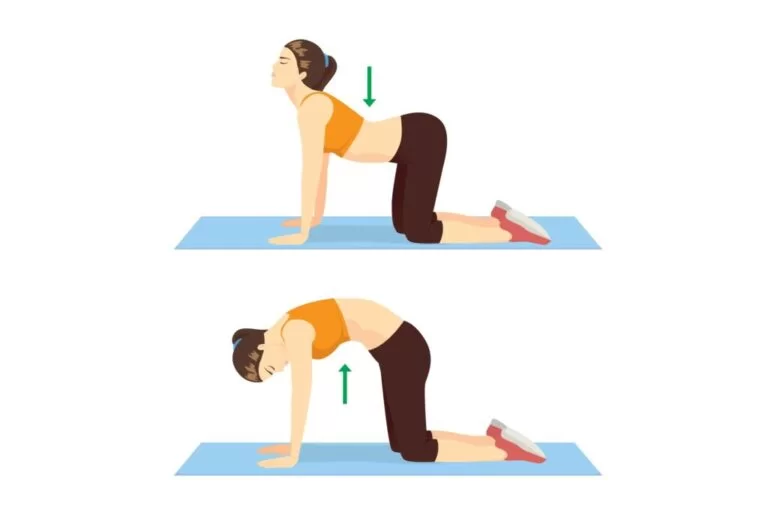
Cat Cow is a gentle flow between two positions that warms the body and gives flexibility to the spine. It stretches the back and neck and gently stimulates and strengthens the abdominal organs. It also opens the chest and encourages breathing to slow down and deepen. Movement of the spine in these two positions stimulates the work of the kidneys and adrenal glands. Coordinating this exercise movement with the breathing pattern provides you peace.
- Begin by moving into cow pose: inhale as you drop your belly to the mat. raise your chin and chest and look in the upward direction. Broaden your shoulders and take your shoulders away from your ears.
- Next, move into cat pose: as you exhale, pull your belly into your spine and round your back toward the ceiling. the pose looks like a cat.
- Release the crown of your head toward the floor, but don’t press your chin into your chest. Inhale and return to cow pose, then exhale as you return to cat pose.
- Repeat 5-20 times and then rest, sitting on your heels with your body straight.
- This sequence also helps develop postural awareness and balance throughout the body. It aligns the spine and can help prevent back pain with regular practice.
Doing Cat Cow Challenge:
Exaggerate the movements. Imagine making a rainbow shape as you roll your back to the ceiling, and a smile as you roll your back to the floor.
You can also try adding knee raises to the stretch. From a tabletop position, lift your knees a few inches off the ground before moving to the “cat” and “cow.” This puts an extra challenge on your core.
Supine snow angel
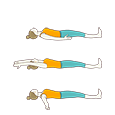
This is a great exercise to improve the dynamic range of motion of your shoulders and also reduce the tension from the neck muscles. while modification you can use the standing position for this exercise.
- Starting position: Lying (on your back) on an exercise mat or firm surface, bend your knees until your feet are 12-18″ off the floor. from your buttocks. Place your arms at your sides with your elbows fully extended and your palms facing in. Breathe deeply for 30 seconds, relax your body, and let gravity gently pull your lower back and shoulders toward the floor.
- Press the shoulders down and retract (pull the shoulder down and back) without increasing the arch of the lower back or lifting the hips off the mat/floor. Contract your abs/core muscles to flatten your lower back to the mat and maintain this position throughout the exercise. Slide your arms out to your sides, forming a 45-degree angle with your body, keeping your upper arms in contact with the mat/floor. Bend your elbows to a comfortable position and keep your wrists in a neutral position (arms, wrists, and hands aligned).
- Up movement: Exhale and gently rotate the upper arms, sliding the mat/floor to the final position where the hands touch the head and the elbows are comfortably bent. Try to keep most of your upper arms, arms, wrists, and hands in contact with or near the mat/floor, and avoid arching your lower back when turning overhead.
Downward Movement: Inhale and gently rotate your arms back to the starting position, trying to keep your upper arms, forearms, wrists, and hands in contact with or near the mat/floor, and avoid arching your lower back as you rotate overhead.
This exercise stretches the shoulders and upper back muscles in a stable and isolated manner. Reducing movement restrictions in the shoulder will help minimize the likelihood of shoulder injury and pain. Try doing this exercise next to a mirror so you can observe unwanted movements in your hips, ribs, shoulder, or lower back.
Scapular Retraction
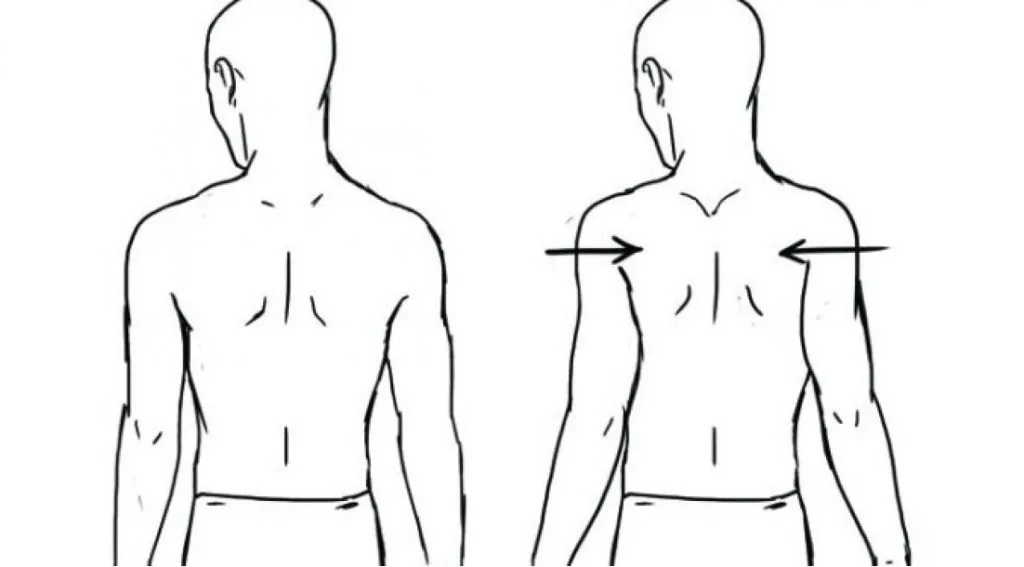
The standing scapular retractor, or shoulder press, is designed to strengthen the muscles between the shoulder blades, which improves posture and reduces stress on your neck, shoulders, and chest.
Take a comfortable position with your feet wide apart. You should be standing with good posture, shoulders over hips. Imagine that the rope is pulling you up and lengthening your spine.
- Squeeze your shoulders together.
- Hold this position for 5 seconds. You can pretend you are trying to squeeze a pencil between your shoulders.
- Make sure the movement comes from the scapular muscles.
- Keep your lower abs engaged and avoid arching your lower back or arching your chest as you perform the movement.
Neck Flexion stretch
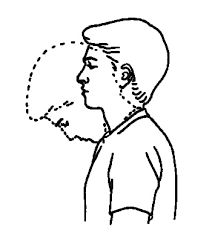
Neck flexion is a procedure in which the chin is moved down towards the chest. Although it is a simple movement, pain, stiffness, and loss of movement can occur in the area. Bending the neck is a movement in which the chin is lowered to the chest. It occurs in a joint just below the skull and uses the deep neck flexors and sternocleidomastoid (SCM) muscles.
- This exercise helps to relax the muscles in the back of the neck and reduce tension.
- Rest your arms at your side and engage your core muscles to stabilize your spine.
- Pull your shoulders back and down. gradually pull your chin towards your manubrium part.
- Hold for 15-30 seconds. Do 2-4 repetitions.
- To deepen this stretch, place one hand behind your head with your fingertips at the base of your skull to guide the movement.
Neck extension
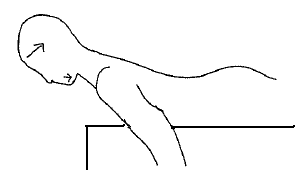
The purpose of these exercises is to reduce the intensity and severity of symptoms. These stretches relieve neck tension and pain, making them an ideal counterweight to activities that require you to repeatedly look down.
- This exercise is considered on the anterior part of the neck. you can do this active exercise take rest in between the exercises. do proper inspiration and proper expiration after the exercise.
- Do Inspiration as you do neck extension and exhale as you return to the starting position.
- Begin in a sitting position. gradually extend your neck back and look at the ceiling.
- Hold this position for 5-10 seconds. Do 5 repetitions.
When Is Cervicogenic Headache Serious?
In some cases, CGH can be caused by dangerous underlying conditions, such as a tumor, bleeding, fracture, or arteriovenous malformation (abnormal relationship between arteries and veins) in the head or neck. In such cases, one or more of the following symptoms may also occur. A change in the type of headache, such as a severe headache is unbearable.
Nausea and vomiting
Confusion and disorientation
Headache caused by coughing or the Valsalva maneuver (an attempt to expel air while the mouth and nostrils are pinched)
Neck stiffness and swelling
Numbness in hands
If these symptoms appear, it is important to consult a doctor immediately.
Outcome Measures
- Neck Disability Index
- Headache Disability Index
- The Northwick Park Questionnaire
- Neck Pain and Disability Scale
- Numeric Pain Rating Scale
- Pain visual analog scale
Physical therapy Treatment
Although this type of headache responds to treatment directed at soft tissue limitations, the examination, evaluation, and treatment must be specific to the neck and occiput.
Manipulation or mobilization of the cervical spine
strengthening exercises including deep neck flexors and upper back muscles.
Thoracic spine thrust manipulation and exercise. C1-C2 Self-applied Natural Apophyseal Glide (SNAG) has been shown to be effective in reducing cervical headache symptoms.
CCF movement retraining
The synergy of the neck flexor muscles is tested with the Craniocervical Flexion Test. The patient palpates the superficial hooks to prevent their inappropriate use. It is important to emphasize accuracy and control.
Extensors of the craniocervical spine
The patient practices an eccentric drive of the head to flexion followed by a concentric drive back to neutral in a 4-point kneeling position to practice coordination of the deep and shallow cervical extensor muscles.
These exercises are combined with retraining of the shoulder muscles in these positions and begin at the beginning of the program. Exercise is facilitated by alternating small sets of craniocervical extension and flexion while keeping the cervical spine in a neutral position.
Contraction of the flexor and extensor joints of the neck
Contraction is promoted by rotation and exercises begin when the patient is able to activate the core muscles. The patient independently uses isometric rotation in the correct sitting position. They face the palm, allowing the resistance to relax the muscles and alternate rhythmic stabilization exercises that emphasize slow and slow hold contractions, using resistance equal to about 10-20% effort. Shallow and deep flexion synergistic strength retraining.
Relearning the synergy of superficial and deep elastic strength
Head elevation is preceded by CCF, followed by cervical flexion to simply raise the head of the bed. Gravity and head load provide resistance. Care should be taken not to start heavy training too soon, as this can trigger symptoms.
Scapula retraining
Scapular Orientation Retraining in Posture The correct strategy is for the patient to move the coracoids upward and the acromion laterally, resulting in slight retraction and external rotation of the scapula. The goal is to facilitate the coordinated action of all parts of the trapezius and serratus anterior by allowing the lower trapezius to press lightly on the medial edge of the scapula, which lengthens (and relaxes) the scapula.
Once the patient has learned the correct scapular orientation, he repeats the correction and maintains this position regularly throughout the day to become a habit. Exercises the endurance of the scapular stabilizers. Repeated repetitions of 10 seconds in the corrected position of the scapula promote early patient retraining. The resistance of the middle and lower trapezius muscles is also trained by doing the exercise lying down against the influence of gravity.
Repeated control of the scapula with arm movement
This is important if activities such as computer or desk work make the pain worse. The patient is encouraged to maintain the newly learned scapular position while making small (+/- 60 degrees) arm movements or while working on the computer, for example. Scapular control along with cervical position control is also practiced for functional activities such as lifting and carrying.
Postural re-education
Posture is an indirect measure of the functional state of the neuromuscular system. The position is practiced sitting and is corrected from the hip. Another aspect of postural retraining is correcting the position of the scapula. Maintaining proper scapular position with proper muscle coordination is an added benefit because it induces mutual muscle relaxation, such as raising the scapula, which reduces muscle pain in the area.
Sensory motor training
The cervicogenic headache is related to sensory-motor training. Sensorimotor exercises involve progressive practice on unstable surfaces that promotes reflex stability and postural stability. Unstable surfaces such as exercise balls or foam pillows can be used during stabilization exercises for the cervical spine and the whole body. These final stages of the rehabilitation program for CGH patients can be progressed to functional activities to restore the patient to full participation.
It consists of different manual approaches such as compression, stretching, or cross-friction massage. Pressure is released over the TrP by the sternocleidomastoid muscle and pressure is gradually applied and increased over the TrP until the finger experiences an increase in tissue resistance (tissue barrier). This pressure is maintained until the therapist notices a release of tension. At this point, the pressure is increased again until the next increase in tissue resistance. Do this 3 times per session. Stretching the muscle fibers of the tension band is also important. This technique is effective in lengthening the TrP in muscle and related connective tissue. The therapist applies moderate slow pressure to the TrP and slides the fingers in opposite directions. Manual trigger point therapy is applied slowly and is performed without causing pain to patients.
(Myofascial) Mobility, strength, stability, and posture exercises
These techniques were mainly post-material relaxation procedures, myofascial mobilization, and selected elements of McKenzie therapy. Exercises were mostly applied to muscles with TrP, which showed a pathological increase in EMG amplitude. Once the sore and tight muscles are relaxed, the next step in treatment is to strengthen the same muscles. all of them were checked by the physiotherapist. The intensity of training should not increase the pain in the cervical spine, shoulder, and girdle muscles. They should not cause headaches. There are isometric exercises with a gradual increase in load and dynamic exercises. These exercises usually use elastic bands. In addition, correct posture self-monitoring exercises are performed in front of the mirror based on visual feedback.
Home remedies for Cervicogenic Headache
People can get a treatment form of physical therapy called sustained natural apophyseal glide (SNAG). SNAG involves using a towel to mobilize the areas of the neck that are causing painful symptoms. A physical therapist can teach a person how to get SNAG treatment at home.
In 2022, a small randomized controlled trial found that SNAG techniques are effective in reducing pain and increasing range of motion in females with cervicogenic headaches.
- People may also try specific exercises(which target the neck muscles) and alternative treatments for pain relief, including headaches. These include:
- deep breathing techniques
- yoga
- relaxation regimes
Complications from Cervicogenic Headache
If left untreated, a cervicogenic headache might become incapacitating.
Some people can also experience chronic or recurring cervicogenic headaches. if you have this type of symptom you should take advice from your health care and discuss the treatment plan.
Prevention For the Cervicogenic Headache
- Some cervical headaches cannot be prevented. That’s how it is headaches caused by a condition such as osteoarthritis, which tends to develop with age.
- Some using the same strategies for pain relief can also prevent these headaches. For example, always use proper or good posture for sitting or driving.
- Do not sleep with your head too high on a pillow Instead, keep your neck and back in line and use a neck support while you sleep. you can use an upright position on the chair.
- Avoid head and neck collisions during sports as well as cervical spine injury.
Acupuncture Benefits for Cervicogenic Headaches
- Acupuncture aims to restore the flow of positive energy throughout the body.
- It is also said to remove negative energy that causes you pain. From a modern medicine point of view, acupuncture stimulates different systems in your body.
- Acupuncture divides your body into zones and pressure points. Acupuncture needles are placed on different pressure points depending on your symptoms.
- These needles are usually near the nerves in your body. The needle stimulates the nerves to release hormones, like endorphins that trigger your body’s response. It is immune and blood circulation Proponents of acupuncture claim that stimulating the system relieves migraines and tension headaches.
Triggering Factors for Cervicogenic Headache
In most cases, certain activities can trigger or worsen CGH pain. A couple of examples of Activities that can trigger an episode of CGH or worsen its symptoms include:
External pressure, such as pressing hard on the base of the skull or the spinal area Abnormal head or neck positions or movements.
An unusual sleeping position (especially sleeping on your stomach) can cause pain awakening, which usually subsides later Valsalva maneuver – an attempt to expel air with a closed mouth and pinched nostrils.
Examples of this process include coughing, sneezing, laughing, and lying on the toilet.
The most common triggers are related to the use of position and external pressure. CGH symptoms caused by coughing or the Valsalva maneuver may indicate more serious conditions, such as tumors or cervical artery dissection.
A Note from Mobility Physiotherapy Clinic
Cervicogenic headache is a type of secondary headache caused by problems in the neck. The causes of cervicogenic headaches are deformations of the neck vertebrae, neck injuries, inflammations, and other diseases. Without treatment, cervical headaches can get worse and debilitating. People may experience chronic or recurring headaches that do not respond to medication. People can manage their symptoms at home or with a combination of therapeutic, surgical, and medical methods.
FAQ
Exercise for the chin “Sit up straight and focus on the front. Place one finger on your chin. Without moving your fingers, pull your chin and head straight back until you feel tension at the base of your head and the top of your neck. Hold for five seconds before returning your chin to your finger.
If you sleep on your back, use a relatively narrow pillow so that your head is not too forward. By carefully controlling your sleeping position, avoiding sudden neck movements, and taking appropriate anti-inflammatory medications, most cervical headaches can be prevented or controlled.
Cervicogenic headache – physiopathology
Cervicogenic headache is thought to refer to pain caused by irritation of cervical structures innervated by spinal nerves C1, C2, and C3; therefore, any structure innervated by the C1-C3 spinal nerves can be a source of cervical headache.
Pillows for neck pain | Samrapan Physiotherapy Clinic
Horseshoe-shaped body pillows can help prevent neck strain when sleeping in a seated position, such as in an airplane or car, or in a reclining position. These small pillows support the neck so that the head does not droop too much to the side.
Forward and backward tilt
Start with your head straight over your shoulders and your back straight. Lower your chin to your chest and hold it for 15-30 seconds. Relax and slowly raise your head. Bring the base of the head toward your back and tilt your chin toward the ceiling.… Repeat the sequence several times.
Cervicogenic headaches are treated by doctors, but it all depends on the severity of the headache. For recurring headaches, it is necessary to get a medical diagnosis. If left untreated, the pain may worsen or the condition of the neck may worsen.
Cervicogenic headache – Samrapan Physiotherapy clinic
The upper trapezius, sternocleidomastoid, scales, levator scapulae, pectoralis major, and small and short suboccipital extensors are involved.
How to treat a cervical headache
Cervical retraction while sitting with head nodding with positive pressure.
Deep neck flexor relief on the back.
The corrected position remains.
Door pectoralis muscle stretch.
Thoracic spine extensions above the small ball.
Shoulder blade squeeze.
supine snow angels.
REFERENCES
- Eske, J. (2023, July 27). What is a cervicogenic headache? https://www.medicalnewstoday.com/articles/324108#causes
- Cervicogenic Headache. (n.d.). Physiopedia. https://www.physio-pedia.com/Cervicogenic_Headache
- Cervicogenic Headaches. (2016, December 21). WebMD. https://www.webmd.com/migraines-headaches/cervicogenic-headache-facts_
- Cpt, R. M. B. (2021, October 18). How to Do Neck Circles: Proper Form, Variations, and Common Mistakes. Verywell Fit. https://www.verywellfit.com/how-to-do-neck-circles-techniques-benefits-variations-5196472#:~:text=Roll%20your%20head%20gently%20forward,for%201%20to%202%20seconds.
- Neck Exercises | Lateral Neck Flexion. (n.d.). https://www.acefitness.org/resources/everyone/exercise-library/202/lateral-neck-flexion/
- Chin Tucks ET. (n.d.). Hingehealth. https://www.hingehealth.com/resources/articles/chin-tucks/
- Doorway Pectoral Stretch (Flexibility). (n.d.). Saint Luke’s Health System. https://www.saintlukeskc.org/health-library/doorway-pectoral-stretch-flexibility
- How to do Doorway Pec Stretch. (n.d.). https://www.getwellen.com/exercises/doorway-pec-stretch
- How to do Standing Scapular Retraction. (n.d.). https://www.getwellen.com/exercises/standing-scapular-retraction
- Inhc, A. C. A. C. (2020, December 28). How to Do Shoulder Rolls. Verywell Fit. https://www.verywellfit.com/how-to-do-shoulder-rolls-for-stretching-techniques-benefits-variations-5087065
- Tran, P. (2023, October 19). How to Do Cat-Cow Pose in Yoga. EverydayYoga.com. https://www.everydayyoga.com/blogs/guides/how-to-do-cat-cow-pose-in-yoga
- Brazier, Y. (2023, November 15). What are cluster headaches?
- Ab Exercises | Supine Snow Angel (Wipers) Exercise. (n.d.). https://www.acefitness.org/resources/everyone/exercise-library/124/supine-snow-angel-wipers-exercise/



![Downward Facing Dog Pose[Adho Mukha Svanasana]](https://mobilephysiotherapyclinic.net/wp-content/uploads/2023/12/Downward-Facing-Dog-PoseAdho-Mukha-Svanasana.webp)

